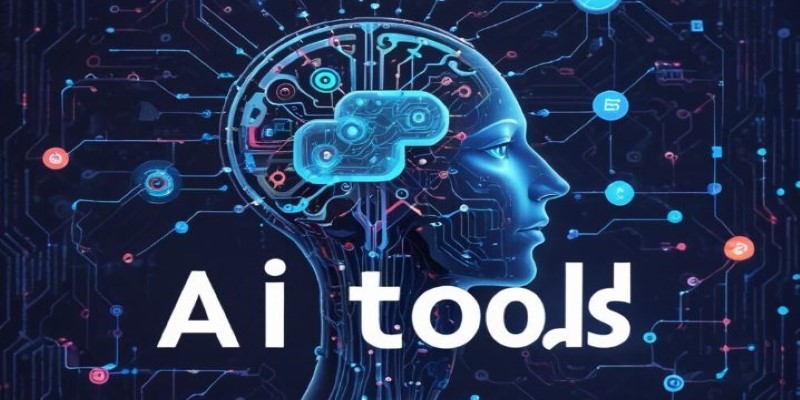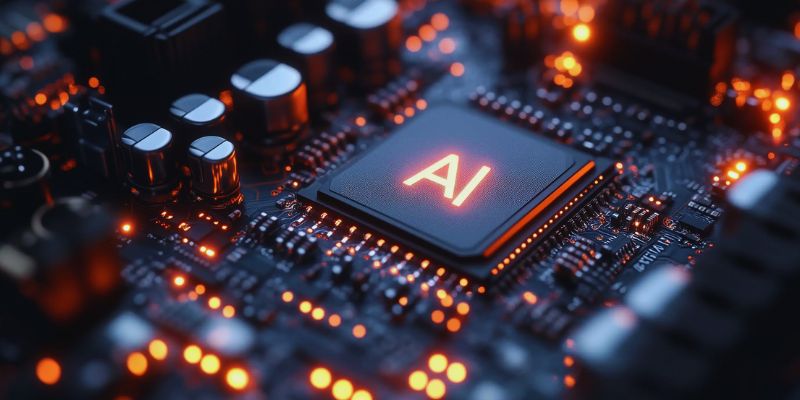Advertisement
People are curious about what’s behind the AI chatbots they’re using. Some are okay with slick, commercial platforms. Others want to know what powers the thing, how it's trained, and whether it can be trusted. That’s where HuggingChat comes in. It’s an open-source AI chatbot that aims to offer a more transparent and flexible alternative to ChatGPT. It doesn't hide behind a paywall or a mystery model. It’s part of a growing movement where users and developers want more control over their tools—and more say in how those tools evolve.
HuggingChat was created by Hugging Face, a company best known for its open-source work in natural language processing. If you’ve heard of the Transformers library, you’ve already brushed against their work. They’re not just building models—they’re building infrastructure for people to collaborate on AI development, much like GitHub does for code.
HuggingChat is built using open-weight language models, such as OpenAssistant or Mistral-based variants, depending on which one is plugged in at any given time. These models aren't hidden away on private servers. Developers can access them, modify them, and even host their versions. That's a big difference from commercial AI like ChatGPT, which is locked behind licensing and corporate control.
The goal is to keep things accessible and open. The chatbot interface on HuggingChat might look simple, but it’s sitting on top of a flexible platform that anyone can adapt. This setup appeals to hobbyists, researchers, and startups that want to experiment without worrying about closed systems or API restrictions.
The foundation of HuggingChat is a large language model, just like ChatGPT. But while ChatGPT’s architecture is proprietary, HuggingChat’s core often comes from open-weight models like Open Assistant or Mistral-7B. These models are trained using a mix of publicly available datasets, community contributions, and reinforcement learning with human feedback.

The interface is web-based, easy to use, and provides a basic chat experience without bells and whistles. That simplicity isn’t a limitation—it’s an opportunity. Users can inspect the underlying model, understand what’s being used, and even contribute to it.
One of HuggingChat's standout features is its encouragement of transparency. Users can see the model name, its training scope, and even sometimes access training data summaries. That's not possible with ChatGPT or other big commercial bots, where the models are largely black boxes.
This open nature means HuggingChat can serve as a testing ground for new AI ideas. Developers can swap models, fine-tune their versions, or experiment with safety layers and prompt controls. The results are shared, discussed, and improved in public forums like the Hugging Face community or GitHub.
For developers, HuggingChat is more than just a chatbot. It’s a starting point. It gives them the freedom to build apps, tweak responses, or integrate the chat model into other tools. With its permissive license and plug-and-play components, HuggingChat becomes part of a developer’s toolkit instead of just a tool they rent from a company.
Researchers like HuggingChat because they can test hypotheses with real models. They don't have to reverse-engineer black-box systems. If they want to understand how a model handles bias, ambiguity, or contextual understanding, they can look under the hood. They can train their variations using Hugging Face's infrastructure and even deploy a chatbot that behaves differently from the main version.
Education is another use case. HuggingChat can be deployed in learning environments where students study model behavior, tuning, and even ethics. That’s something you can’t do as easily with ChatGPT, where you’re limited to what the platform allows.
This flexibility has led to a wave of experimentation. People are testing multilingual versions, domain-specific tuning for things like medical or legal use, and more secure configurations that don’t log user data by default.
ChatGPT is known for its polish and consistency. It has strong conversational flow, handles complex prompts well, and integrates tightly with tools like code interpreters or image generation. But it’s closed. You don’t know exactly how it was trained, what data it saw, or what biases may be built in.

HuggingChat, by contrast, doesn't pretend to be the most refined product. It's not trying to replace ChatGPT in every way. What it offers is openness. You can see the pieces, swap them out, and run your version. That's rare in the current AI space.
Performance-wise, HuggingChat isn’t always as fluid or accurate as ChatGPT, especially for complicated queries. That gap is narrowing as newer open-weight models become more advanced. Mistral, Mixtral, and other models now come close to matching GPT-3.5 or even GPT-4 for some tasks, depending on how they’re tuned.
Where HuggingChat shines is in its flexibility. If you don't like how it responds, you can change it. If you need a private version, you can deploy it on your server. If you want to use it offline or on limited networks, it's possible. This gives users more control over privacy, security, and customization.
And while ChatGPT often feels like a finished product, HuggingChat feels more like a living project. It evolves with community input. It reflects new models and ideas faster than commercial tools can update. It’s not perfect, but it’s open—and that changes everything.
HuggingChat stands out as a transparent and flexible option for those who want more than a polished chatbot. It gives developers, researchers, and curious users the ability to explore, modify, and build on top of open models. While it may not match the speed or polish of commercial tools, it offers something they don’t—freedom to understand and shape the technology. As the AI landscape grows, platforms like HuggingChat will play a bigger role in making sure AI stays accessible and adaptable. For anyone interested in how AI really works, HuggingChat is a smart place to start experimenting and learning.
Advertisement

Vendors must adapt to the AI assistant craze by offering real value, ensuring privacy, and focusing on intuitive solutions

JPMorgan Chase cautiously explores generative AI, citing financial services security, ethics, compliance challenges, and more

Discover the top AI search engines redefining how we find real-time answers in 2025. These tools offer smarter, faster, and more intuitive search experiences for every kind of user

From how ChatGPT writes our podcast to how ransomware decryption works, and why the mobile phone turning 50 matters—this article explains the links between AI, security, and communication

How to print without newline in Python using nine practical methods. This guide shows how to keep output on the same line with simple, clear code examples

Looking for beginner-friendly places to explore AI tools? Discover the top 9 online communities for beginners to learn about AI tools, with real examples, clear guidance, and supportive discussion spaces

Learn about constructors in Python, their types, and rules. Discover how constructors in Python help initialize objects and simplify class design for cleaner code

How to encourage ChatGPT safety for kids with 5 practical strategies that support learning, creativity, and digital responsibility at home and in classrooms

Explore how Amazon Nova Premier is revolutionizing AI models and agents with its intelligent, cloud-based innovations.

Intel and Nvidia’s latest SoCs boost AI workstation performance with faster processing, energy efficiency, and improved support

What is HuggingChat and how does it differ from ChatGPT? Discover how this open-source AI chatbot offers a transparent, customizable experience for developers and researchers

Explore 8 clear reasons why content writers can't rely on AI chatbots for original, accurate, and engaging work. Learn where AI writing tools fall short and why the human touch still matters